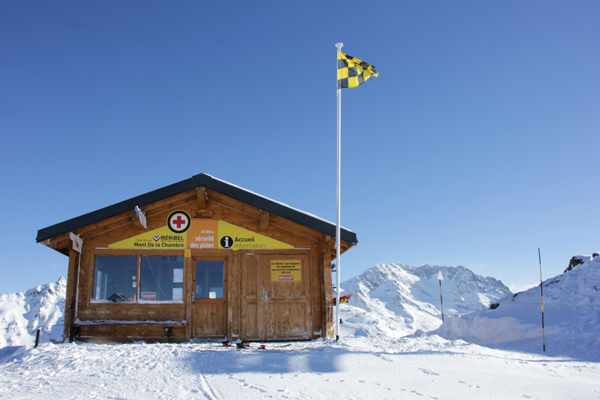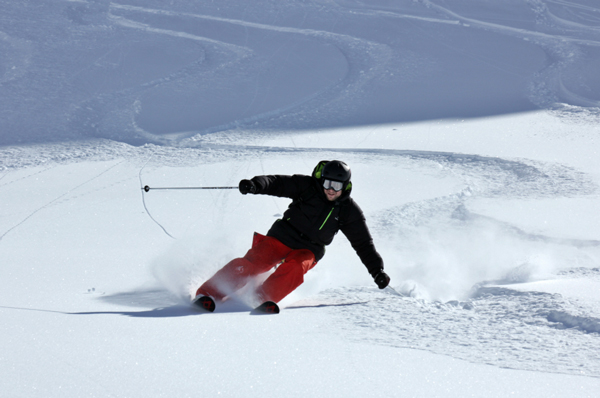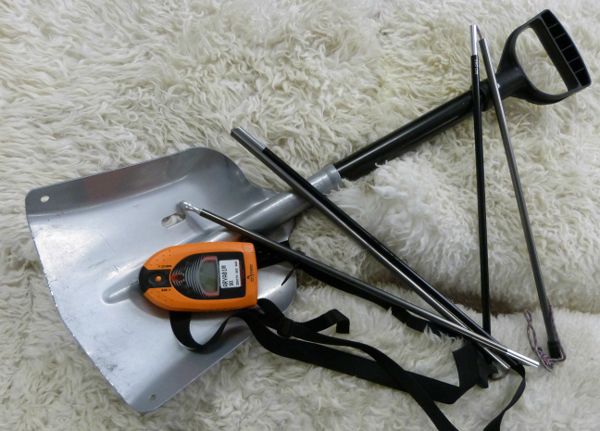
An independent guide to Val Thorens


This page deals with some of the off piste safety considerations.
There's an outline of the risks involved, an equipment list, and a checklist of preparations. There are also notes on how to conduct a descent, and on accident procedure.
Read about off piste safety here.
The notes here are brief guidelines, and not a substitute for information in a full reference work and/or a proper training course.

There are risks involved in off piste expeditions. It's essential to have a knowledge of, and respect for, the mountain environment.
When you choose to ski or board off piste you take a calculated risk, and you accept responsibility for yourself, the friends you're with, and anyone else you encounter.
Remember that:
Proper training is essential if you are going to ski off piste.
You should:
The British Association of Ski Patrollers (BASP) run outdoor first aid courses. Henry's Avalanche Talk offer in-person and online lectures, and courses in the UK and Val d'Isère.
If you haven't got the necessary off piste safety skills, it's sensible to hire a local instructor or mountain guide.

Local instructors and mountain guides know the area, and have seen the evolution of the snowpack over the winter season. With them, you can have a safer and more enjoyable off piste experience.
The high mountain guides in Val Thorens can be contacted through the main ESF office in place de Caron. A guide is usually present at the ski school office from 5pm.
The ESF Neige et Montagne web pages represent the high mountain guides and the instructors specialising in off piste.
The Bureau des Guides website has details of all the high mountain guides in the Belleville valley.

The equipment you need depends on the itinerary you're doing. The basic kit you always need is:
You can rent or buy off piste equipment at Zenith Ski Shop in Val Thorens.
You'll carry these items in a rucksack. If you do a lot of off piste, and/or you have the money, it's worth investing in an airbag rucksack.

An airbag rucksack has an airbag which can be inflated by pulling a handle on the strap. In the event of an avalanche it keeps you on the surface and prevents you getting buried.
The video shows a test in Zenith ski shop.
You may also wish to take an altimeter and some food and drink.
More kit is needed for glacier skiing, including harnesses and ropes. That's beyond the scope of this page.

For each trip, there are a few essential preparations to make. You should:
Don't hesitate to ask a mountain guide for advice the evening before your trip; go and find one at the ESF office during their permanence.
In my experience, they are generous with their time and expertise.
You could ask the ski patrol (pisteurs) for information about the current avalanche risk, but don't expect advice about off piste itineraries because it's not part of their job to ski off piste.
Avalanche information is given through flags flying outside the ski patrol huts, and/or information boards.
If the weather forecast or the avalanche risk make it unsafe to proceed with your itinerary, be prepared to change your plans.
There is a European avalanche risk scale, with five levels. This is the scale.
| Avalanche risk | Description | Flag in France | Snowpack Stability | Likelihood of Triggering |
|---|---|---|---|---|
| 1 | Low risk |  |
The snowpack is well-bonded and stable in general. | Triggering is generally possible only from high additional loads in isolated areas of very steep, extreme terrain. Only small and medium natural avalanches are possible. |
| 2 | Moderate risk |  |
The snowpack is only moderately well-bonded on some steep slopes; otherwise well-bonded in general. | Triggering is possible, primarily from high additional loads, particularly on the indicatedc steep slopes. Very large natural avalanches are unlikely. |
| 3 | Considerable risk |  |
The snowpack is moderately to poorly bonded on many steep slopes. | Triggering is possible, even from low additional loads, particularly on the indicated steep slopes. In certain situations some large, and in isolated cases very large natural avalanches are possible. |
| 4 | High risk |  |
The snowpack is poorly bonded on most steep slopes. | Triggering is likely, even from low additional loads, on many steep slopes. In some cases, numerous large and often very large avalanches can be expected. |
| 5 | Very high (extreme) risk |  |
The snowpack is poorly bonded and largely unstable in general. | Numerous very large and often extremely large natural avalanches can be expected, even in moderately steep terrain. |

These are a few guidelines for a safe descent off piste:
Don't follow other people's tracks unless you know where they lead.
First aid courses fully cover what to do in case of an accident. Some of the considerations are:

Skiing Made Easy is a Kindle ebook and paperback. It's a practical guide to learning to ski, based on many happy seasons of ski teaching in Val Thorens.
'This is the book I wish I'd had when I started skiing' - Amazon reviewer.
Read more about Skiing Made Easy.
Buy the paperback direct or on Amazon. Buy the Kindle ebook.

Mammut Tour 40 Removable Airbag 3.0.
£641.70 on Amazon at the time of writing (affiliate link).